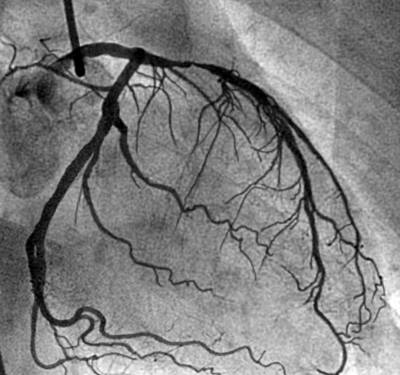Surgery gives new lease on life for survivors of sudden cardiac death
Physicians must consider a relatively rare anomaly in one of the main two arteries that feed the heart while treating survivors of sudden cardiac death.
Published online 31 January 2016

In a rare congenital disease, the left coronary artery arises from the pulmonary artery instead of the aorta,decreasing the oxygen that should normally reach the heart muscle.
© PHOTOTAKE Inc. / Alamy Stock Photo
The left coronary artery is one of two main arteries responsible for supplying the heart muscle with oxygenated blood. It arises from the body’s main artery, the aorta, just as it leaves the heart.
In a rare congenital disease of the heart, the left coronary artery arises instead from the pulmonary artery, which is responsible for carrying deoxygenated blood from the body to the lungs in order to get reoxygenated. In this condition, called anomalous origin of the left main coronary artery from the pulmonary artery (ALCAPA), the heart’s muscle doesn’t get fed with as much oxygen as it normally would.
ALCAPA is often detected in the first year of life owing to the problems that arise as a result, but if left untreated or undetected, it has a bad prognosis. Some patients can survive into early adulthood owing to new blood vessel formation, but sudden cardiac death is often the first manifestation of this condition in these patients.
A 17-year-old male patient was referred to cardiologists at the Aswan Heart Centre in Egypt after being successfully resuscitated from sudden cardiac death, which happened while playing football. He had no prior history of heart-related ailments. Investigations revealed he had ALCAPA accompanied by thickening in the wall of the left ventricle of the heart, which is responsible for pumping oxygenated blood into the aorta.
The team surgically corrected the condition by moving the anomalous left main coronary artery from its point of insertion in the pulmonary artery to the aorta. The patient was discharged from hospital just five days after surgery. Six months later, he had returned to his normal daily activities and an echocardiogram showed his left ventricle had normal dimensions.
The team emphasize the importance of considering ALCAPA as one of many possible reasons behind sudden cardiac death in surviving young adults. Surgical correction of the anomaly is the best treatment option in the absence of widespread scarring of the heart muscle, they write in the journal Global Cardiology Science & Practice, where they also describe their surgical approach.
Reference
- Simry., W., Afifi, A., Hosny, H., Elguindy, A. & Yacoub, M. Anatomic correction of ALCAPA in an adult presenting with sudden cardiac death. Glob. Cardiol. Sci. Pract. 2015, 46 (2015). | article
DOI: 10.1038/qsh.2016.99

